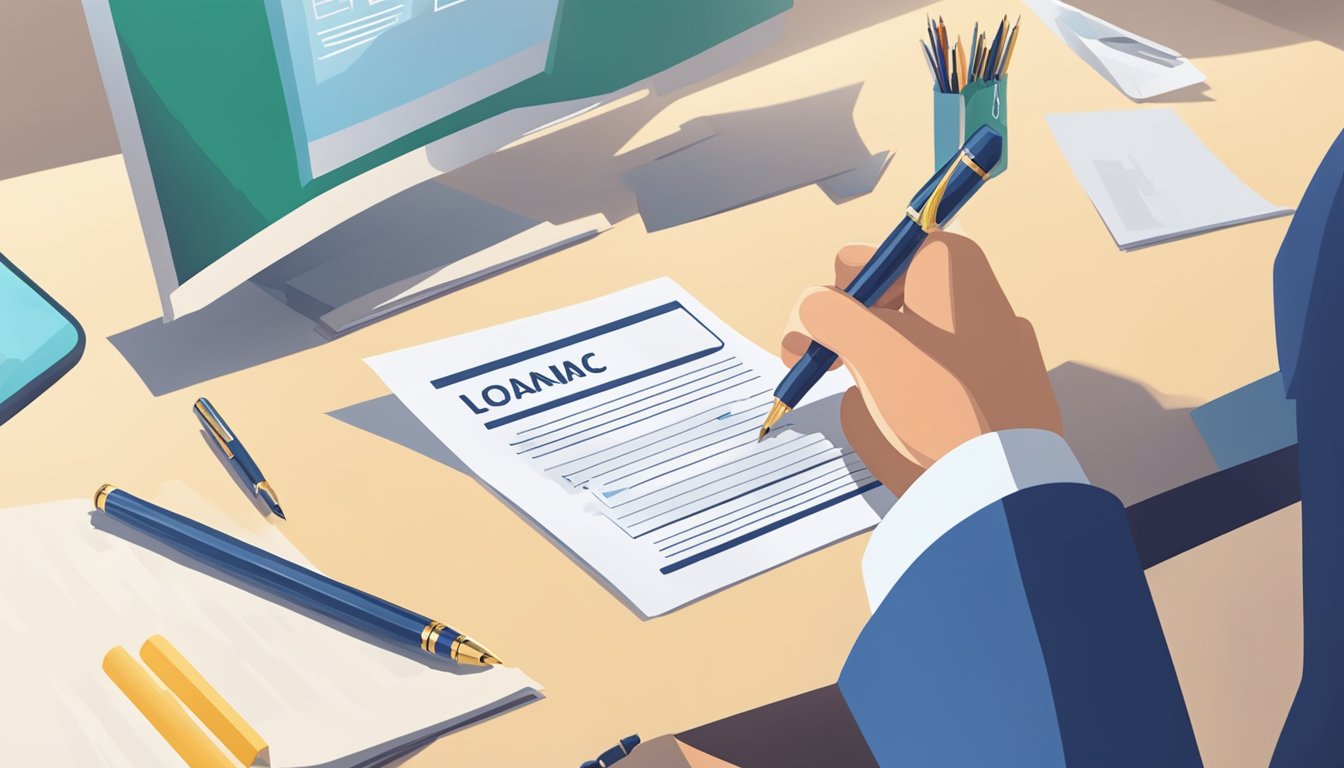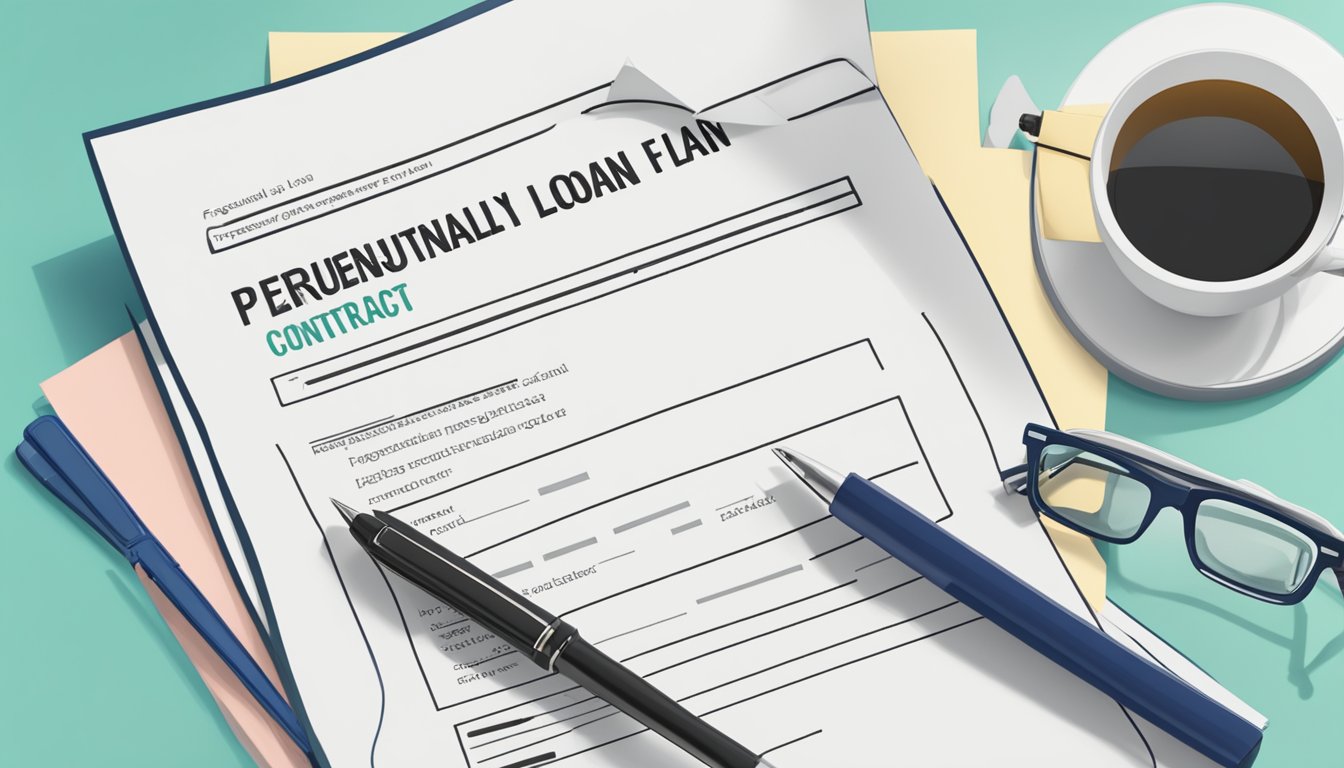If you’re in need of financial assistance, a personal loan could be an option for you. However, before you jump into any agreement, it’s important to understand the key components of a personal loan contract. This legally binding document outlines the terms and conditions of the loan, including the amount borrowed, interest rate, and repayment schedule.

A personal loan agreement is a contract between a borrower and a lender. It’s important to note that this is a legally binding document, which means both parties are obligated to follow the terms outlined in the agreement. The agreement can be used for a variety of purposes, such as consolidating debt, paying for unexpected expenses, or financing a large purchase.
When entering into a personal loan agreement, it’s important to understand the legalities and protections in place. For example, the agreement should clearly outline the consequences of defaulting on the loan, as well as any fees or penalties associated with late payments. Additionally, there may be certain legal requirements that must be met in order for the agreement to be enforceable.
Key Takeaways
- A personal loan agreement is a legally binding contract between a borrower and a lender that outlines the terms and conditions of the loan.
- It’s important to understand the key components of the agreement, such as the amount borrowed, interest rate, and repayment schedule.
- Before entering into a personal loan agreement, it’s important to understand the legalities and protections in place to ensure you’re making an informed decision.
Key Components of a Personal Loan Contract

When you’re taking out a personal loan, it’s important to have a clear understanding of the loan agreement. A personal loan contract is a legal document that outlines the terms and conditions of the loan agreement between the borrower and the lender. It’s important to carefully review and understand the terms and conditions of the loan agreement before signing it.
Understanding the Loan Agreement
The loan agreement should clearly state the loan amount, repayment terms, interest rate, and any fees associated with the loan. It should also outline the consequences of defaulting on the loan, such as late payment fees and legal action. Make sure you understand the terms of the loan agreement before signing it.
Determining the Loan Amount and Repayment Terms
The loan amount is the amount of money that the borrower is borrowing from the lender. The repayment terms refer to the length of time that the borrower has to repay the loan. It’s important to determine the loan amount and repayment terms that are right for you. Consider your financial situation and ability to repay the loan before agreeing to the loan terms.
Interest Rates and Payment Schedules
The interest rate is the amount of interest that the borrower will pay on the loan. The payment schedule refers to the frequency of payments that the borrower will make to repay the loan. It’s important to understand the interest rate and payment schedule of the loan before agreeing to the loan terms.
Security and Collateral: Secured vs Unsecured Loans
A secured loan is a loan that is backed by collateral, such as a car or a house. An unsecured loan is a loan that is not backed by collateral. Secured loans typically have lower interest rates than unsecured loans because the lender has collateral to fall back on if the borrower defaults on the loan. It’s important to understand the difference between secured and unsecured loans before agreeing to the loan terms.
Overall, a personal loan contract is a legally binding agreement between the borrower and the lender. It’s important to understand the key components of the loan agreement, including the loan amount, repayment terms, interest rate, and any fees associated with the loan. Make sure you carefully review and understand the terms of the loan agreement before signing it.
Legalities and Protections

When you enter into a personal loan contract, there are certain legalities and protections that you should be aware of. These include default, late payment, and penalties, the importance of notarization and witnesses, and governing law and jurisdiction.
Default, Late Payment, and Penalties
It is important to read and understand the terms and conditions of the loan contract before signing. In the event that you default on the loan, the lender may take legal action against you. This may include adding late fees and penalties to the amount owed.
Late fees and penalties should be clearly stated in the loan contract, and you should be aware of the consequences of late payment. Make sure you understand the terms of the loan agreement and that you are able to meet the repayment schedule.
The Importance of Notarization and Witnesses
To ensure that the loan contract is enforceable, it is important to have it notarized and witnessed. This means that the agreement is signed in the presence of a notary public and witnesses, who can attest to the validity of the contract.
A notary public is a person who is authorized to witness the signing of legal documents. Witnesses can be anyone who is over the age of 18 and not a party to the loan contract.
Governing Law and Jurisdiction
The loan contract should specify the governing law and jurisdiction in the event of a dispute. This means that the law that applies to the contract and the court where any legal action will take place should be clearly stated.
It is important to understand the governing law and jurisdiction before signing the loan contract. This will ensure that you are aware of your rights and remedies in the event of a dispute.
In conclusion, personal loan contracts are legal agreements that should be taken seriously. Make sure you understand the terms and conditions of the loan before signing, and ensure that the contract is notarized and witnessed. Finally, make sure you are aware of the governing law and jurisdiction in the event of a dispute. By following these guidelines, you can protect yourself and ensure that the loan agreement is enforceable.
Frequently Asked Questions

How can I craft a compelling personal loan agreement?
Crafting a compelling personal loan agreement requires careful attention to detail and understanding of the legal implications of the agreement. You should ensure that the agreement is clear, concise, and unambiguous. Use simple language and avoid using jargon or complex legal terms that might confuse the parties involved. You can also seek the assistance of a lawyer to help you draft a legally binding and compelling personal loan agreement.
What steps should I take to legally exit a personal loan agreement?
Exiting a personal loan agreement can be a complicated process depending on the terms of the contract. You should first review the terms of the agreement to understand the conditions for termination. If you are unable to meet the conditions, you should contact the lender and negotiate a repayment plan. If the lender is unwilling to negotiate, you may need to seek legal assistance to help you exit the agreement.
Could you explain the structure of a loan contract?
A loan contract typically contains several sections, including the loan amount, interest rate, repayment terms, and default provisions. The loan amount refers to the amount of money borrowed, while the interest rate is the cost of borrowing the money. Repayment terms outline the schedule for repaying the loan, while default provisions outline the consequences of defaulting on the loan.
What are the typical conditions included in a personal loan?
Typical conditions included in a personal loan include the loan amount, interest rate, repayment schedule, and default provisions. Some lenders may also require collateral or a co-signer to secure the loan.
What essentials must be included when drafting a loan agreement between friends?
When drafting a loan agreement between friends, it is essential to include the loan amount, interest rate, repayment schedule, and default provisions. You should also include a provision outlining the consequences of defaulting on the loan and any collateral or co-signer requirements.
Where can I find a trustworthy template for a personal loan agreement?
You can find trustworthy templates for personal loan agreements online, but it is essential to ensure that the template is legally binding in your jurisdiction. You can also seek the assistance of a lawyer to help you draft a legally binding personal loan agreement that meets your specific needs.




